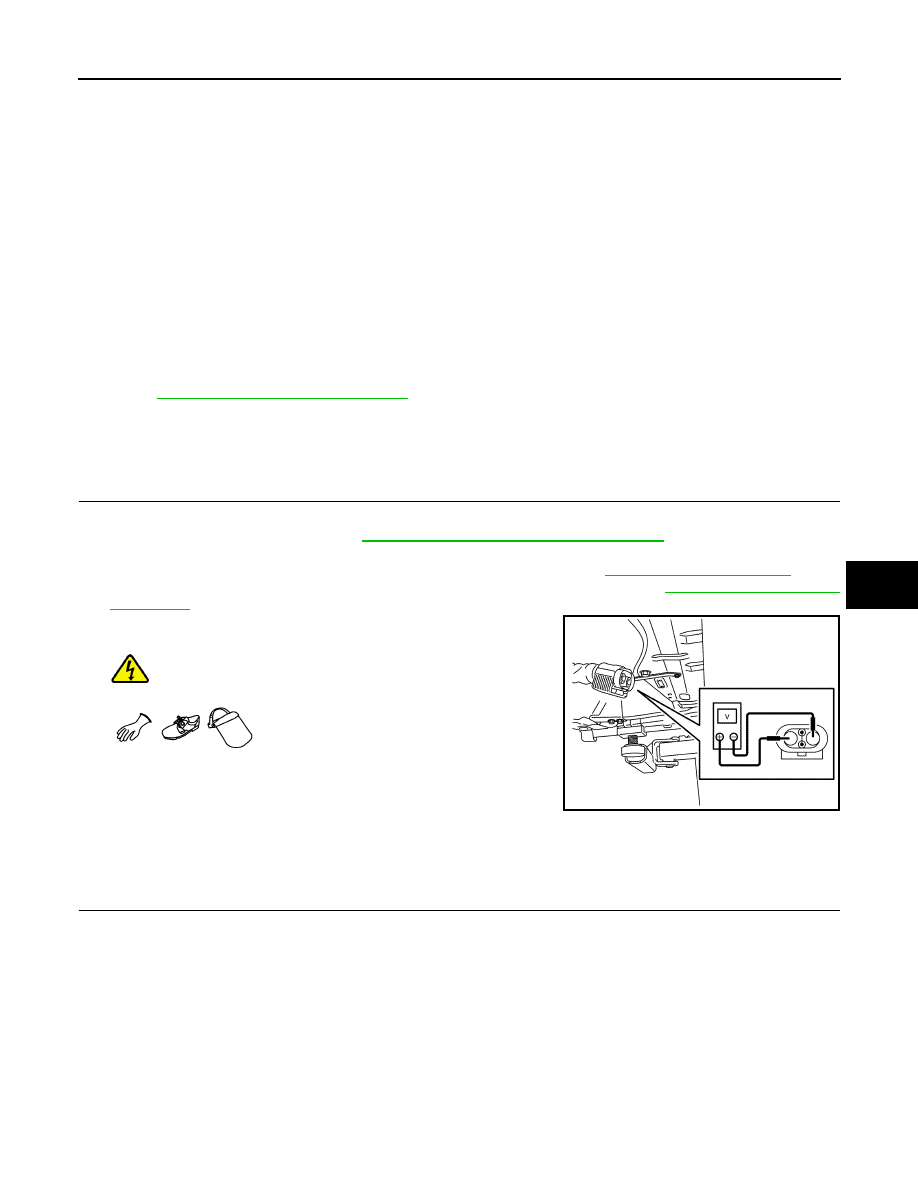Nissan Leaf. Manual - part 834

ELECTRIC COMPRESSOR INSULATION RESISTANCE CHECK
HAC-339
< DTC/CIRCUIT DIAGNOSIS >
[AUTO A/C (WITHOUT HEAT PUMP)]
C
D
E
F
G
H
J
K
L
M
A
B
HAC
N
O
P
ELECTRIC COMPRESSOR INSULATION RESISTANCE CHECK
Component Inspection
INFOID:0000000010122049
WARNING:
• Because hybrid vehicles and electric vehicles contain a high voltage battery, there is the risk of elec-
tric shock, electric leakage, or similar accidents if the high voltage component and vehicle are han-
dled incorrectly. Be sure to follow the correct work procedures when performing inspection and
maintenance.
• Be sure to remove the service plug in order to disconnect the high voltage circuits before perform-
ing inspection or maintenance of high voltage system harnesses and parts.
• To prevent the removed service plug from being connected by mistake during the procedure, always
carry it in your pocket or put it in the tool box.
• Be sure to wear insulating protective equipment before beginning work on the high voltage system.
• Clearly identify the persons responsible for high voltage work and ensure that other persons do not
touch the vehicle. When not working, cover high voltage parts with an insulating cover sheet or sim-
ilar item to prevent other persons from contacting them.
• Refer to
GI-34, "High Voltage Precautions"
.
CAUTION:
There is the possibility of a malfunction occurring if the vehicle is changed to READY status while the
service plug is removed. Therefore do not change the vehicle to READY status unless instructed to do
so in the Service Manual.
1.
PRECONDITIONING
WARNING:
Disconnect the high voltage. Refer to
GI-33, "How to Disconnect High Voltage"
.
Check voltage in high voltage circuit. (Check that condenser are discharged.)
1. Lift up the vehicle and remove the Li-ion battery under covers. Refer to
2. Disconnect high voltage connector from front side of Li-ion battery. Refer to
.
3. Measure voltage between high voltage harness terminals.
DANGER:
Touching high voltage components without using the
appropriate protective equipment will cause electrocution.
CAUTION:
For voltage measurements, use a tester which can measure to 500V or higher.
>> GO TO 2.
2.
CHECK ELECTRIC COMPRESSOR INSULATION RESISTANCE
1. Disconnect high voltage harness connector from electric compressor.
Standard
: 5 V or less
JSAIA1362ZZ